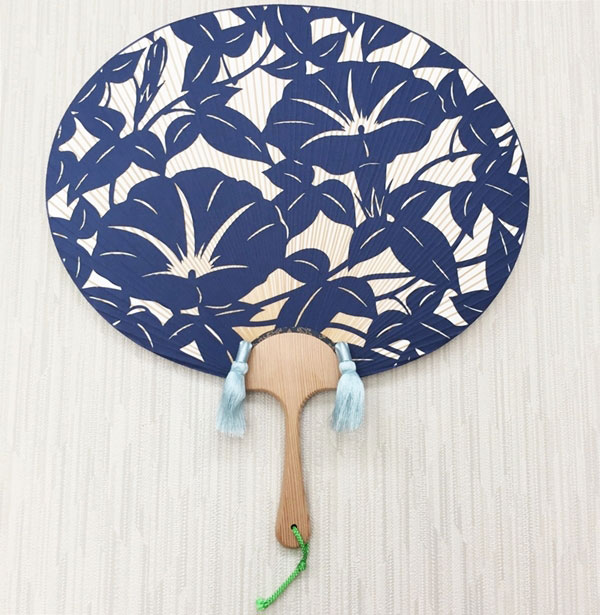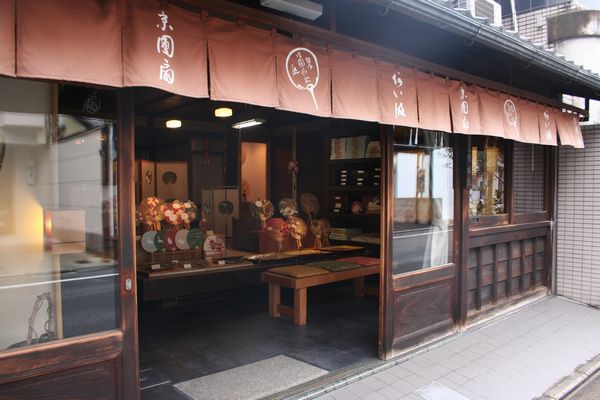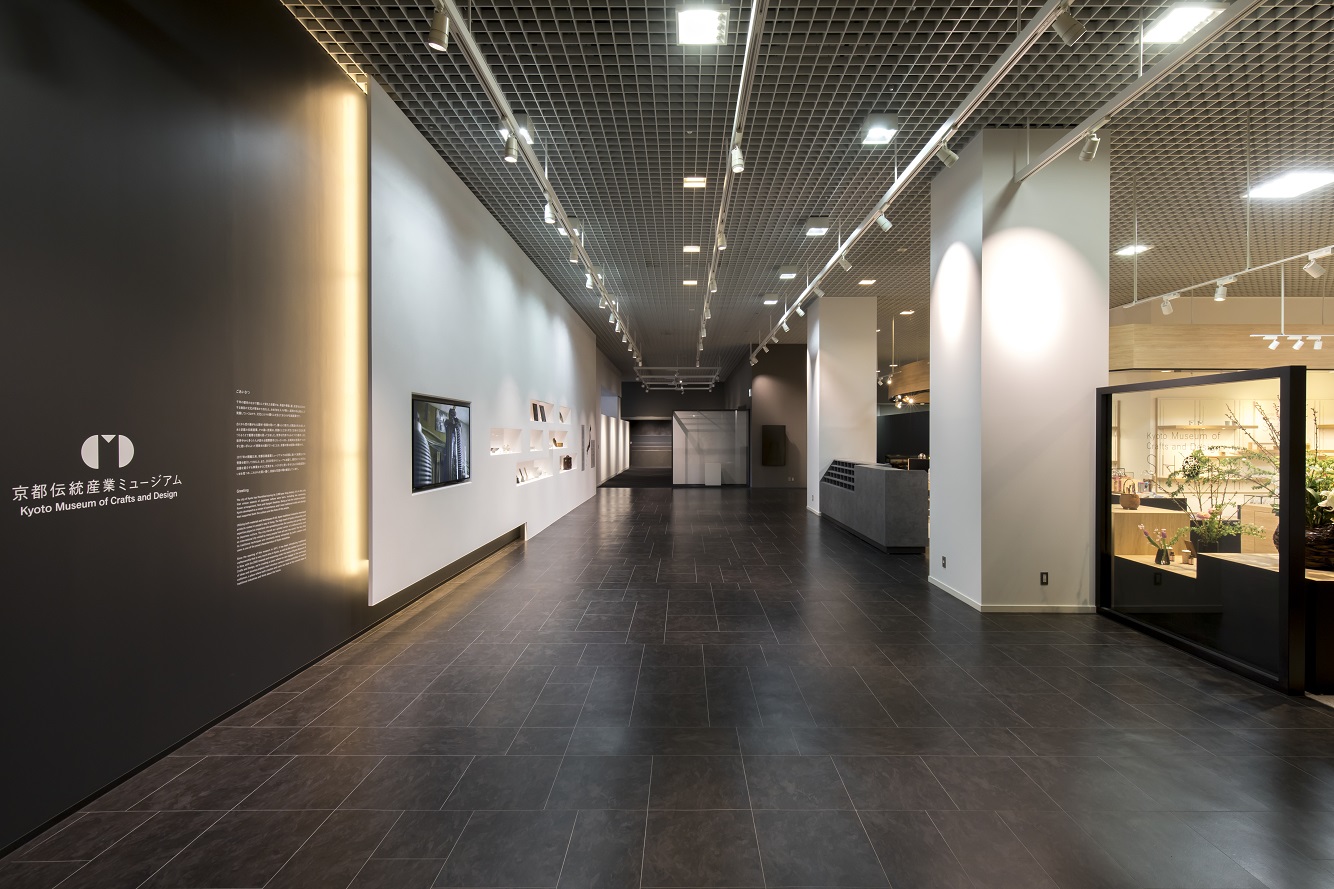
- Other crafts
- Kyoto
Kyo uchiwa fans Kyo uchiwa
The traditional Japanese summer must-have:
A delicate fan made of thin bamboo ribs
Description
What is Kyo uchiwa fans ?
Kyo uchiwa are a type of fan made in Kyoto prefecture. From the many types of Japanese traditional fans, there are three broad categories: Chinese-inspired, southern-inspired, and Korean-inspired with this craft coming from the third category.
The word "fan" in English can refer to both uchiwa, flat fans that do not open, and to sensu which are folding fans. This page refers to the uchiwa type only.
How Kyo uchiwa fans are structured is many thin bamboo ribs aligned to form a flat surface and the handle, attached separately, is made of lacquered and dyed tortoise-shell bamboo. The fans have front and back base papers pasted onto fifty to one hundred bamboo ribs (more ribs equaling more luxurious). The hyakudate (or "a hundred sticks" in Japanese) fan, which has a hundred ribs, is loved as a decorative item.
Kyo uchiwa fans are sometimes called Miyako uchiwa literally meaning “capital fan” or Gosho uchiwa or “imperial palace fan”. They are known for their elegant paintings, gorgeous Japanese lacquerware, and gold leaf decoration. Most of the Kyo uchiwa designs are inspired from traditional Japanese scenery, plants, the changing seasons or haiku and tanka poems.
History
Kyo uchiwa fans originate from Korean fans that were brought to Japan by wakou or pirates of various ethnicities active along the coasts of China and Korea in the 14th century. This craft slowly made its way from the coast to the inland of Japan and eventually to the region of Kyoto. This is where the Kyo uchiwa fans were developed and received the name of Kyo uchiwa or sometimes Kyoto uchiwa. They were also called Miyako uchiwa (capital fan) as Kyoto had been the capital of Japan at the time. Miyako uchiwa fans were beloved by the Imperial Court because of the beautiful artwork on them .
The inserted handle (sashie), unique to Kyo uchiwa fans, was only added at the end of the 19th century, after the Edo period (1603-1868). This is when two of the most important Japanese painting schools, who worked for the nobility, (Tosa and Kano schools) became interested in the fans and began painting on them, giving another name to the Kyo uchiwa: Gosho uchiwa (imperial palace fan). From this period onward, uchiwa fans, including Kyo uchiwa, became a popular household item for all members of society.
Most Japanese houses and stores are now equipped with air conditioning but fans are still an important part of life in Japan. They are used in offices, homes, during transportation, in festivals, or whenever one may need to cool themself off.
In the present, Kyo uchiwa fans are appreciated for their beautiful shapes. designs and versatility from use in daily life to a finishing touch for a yukata (a type of kimono worn in the summer).
General Production Process
- 1. Cutting the bamboo
Bamboo that has been dried is cut along its length and split vertically with a broad-bladed knife into strips that fit the dimensions of the fan.
- 2. Equalizing the edges
The bamboo strips that will become the ribs of the fan are cut on the edges so that they are the same size.
- 3. Adjusting the thickness
The strips are cut into very thin layers.
- 4. Indenting
Little indents are made in the top of the strips.
- 5. Rubbing
The indents at the top of the strips become bigger through rubbing. The indents split naturally on both sides along the bamboo fibers.
- 6. Planing
The strips that will become the ribs of the fan are planed until they are the required thickness.
- 7. Decorating the paper
The paper is decorated with various techniques like hand-painting, woodblock printing, dyeing, or making a collage.
- 8. Backing
The backing paper and the ribs are pasted together. Then, the frame of the fan is created by pasting the backing paper onto the ribs and the thin paper.
- 9. Peeling
The thin paper previously pasted onto the ribs is moistened and peeled away from the ribs.
- 10. Pasting
The front paper is pasted onto the ribs and backing paper.
- 11. Fixing
Once the glue is completely dry, the inside edge of each rib is pinched with a spatula to crease the base papers.
- 12. Reinforcing
A cloth or thick paper is pasted over the part where the fan handle will be inserted so the structure is reinforced.
- 13. Shaping
The paper is cut into the required shape of the fan.
- 14. Finishing touches
After cutting the shape, thin paper is pasted on the circumference, the handle is attached to the reinforced part, and the fan is complete.
Leading Ateliers
Aiba atelier

The traditional Japanese summer must-have: A delicate fan made of thin bamboo ribs
-
Founded1689
-
ClosedOpen every day except Sundays and national holidays. Open every day from April to July.
-
DirectorMaya AIBA
-
Business HoursWeekdays: 9am to 6pm
Saturday: 9am to 12pm -
Address
-
Website
-
Tel.+81-75-221-1460
Where to Buy & More Information
Kyoto Museum of Crafts and Design

-
Address
-
Tel.+81-75-762-2670
-
ClosedDecember 29 to January 3
-
Business Hours9am to 5pm
-
Website
See more Other crafts
- Edo kiriko cut glass
- Koshu lacquered deer leather
- Kyo folding fans
- Marugame uchiwa fans
- Boshu uchiwa fans
- Gifu lanterns
- Yamaga lanterns
- Kyo uchiwa fans
- Tendo Japanese chess pieces
- Edo glass
- Edo patterned paper
- Yame lanterns
- Owari Cloisonné
- Fukuyama Koto (Japanese Harp)
- Kyo art preservation
- Banshu fly-fishing flies
- Woodblock prints
- Koshu hand-carved seals
- Edo Hyogu (Art Mountings)
- Edo tortoise shell crafts
- Etchu Fukuoka Sedge Hats
- Gifu Japanese Umbrellas
- Nagasaki tortoise shell crafts
- Nagoya Sekku Kazari
- Sanshin
- Tokyo Koto (Japanese Harp)
- Tokyo Shamisen































































































































































































































































































